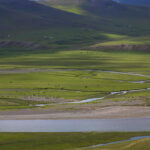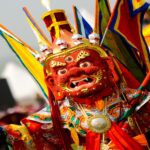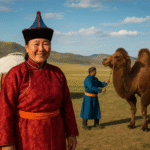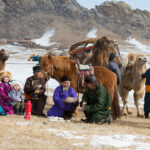Now Reading: Ultimate Mongolian Travel Guide: Discover the Land of Eternal Blue Sky
-
01
Ultimate Mongolian Travel Guide: Discover the Land of Eternal Blue Sky
Ultimate Mongolian Travel Guide: Discover the Land of Eternal Blue Sky
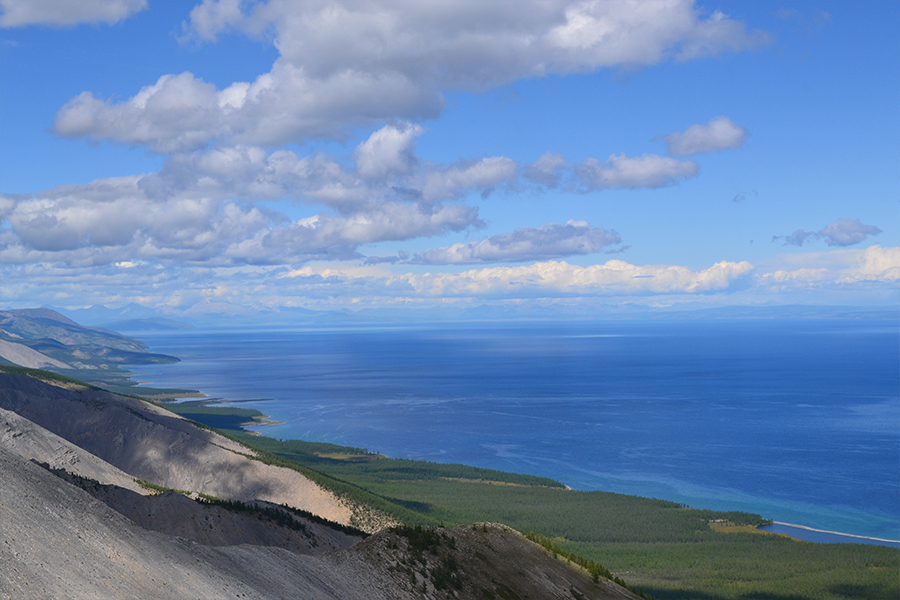
Mongolia is one of the most fascinating and untouched travel destinations in the world. Known as the “Land of Eternal Blue Sky,” this vast country offers boundless landscapes, nomadic culture, and adventures that cannot be experienced anywhere else. Traveling through Mongolia is like stepping back in time, where ancient traditions and pristine nature still dominate daily life.
This comprehensive guide will walk you through everything you need to know about planning a trip to Mongolia—from its culture and history to its best travel routes, essential tips, and hidden gems. Whether you are a first-time visitor or a seasoned traveler, this Mongolian travel guide will help you explore the country in depth and create memories of a lifetime.
Why Travel to Mongolia?
Many countries around the world boast stunning scenery and unique cultures, but Mongolia stands apart because of its raw authenticity. The country is sparsely populated—home to only about 3.5 million people across a territory larger than Western Europe. That means endless open landscapes, with no fences, little infrastructure, and very few signs of mass tourism.
Mongolia is ideal for those who love adventure, cultural immersion, and natural beauty. The reasons why travelers choose Mongolia include:
- The Nomadic Lifestyle: Over a quarter of Mongolia’s population still lives as nomadic herders, moving with their livestock across the steppe. Staying in a traditional ger (yurt) allows travelers to experience this lifestyle firsthand.
- Untouched Landscapes: From the rolling steppes and deserts of the south to the forests and mountains of the north, Mongolia’s terrain is spectacularly diverse.
- History and Heritage: Mongolia was the birthplace of Genghis Khan and the Mongol Empire, which once ruled the largest contiguous empire in world history.
- Adventure Travel: With opportunities for horseback riding, camel trekking, hiking, fishing, and off-road expeditions, Mongolia is a dream for outdoor enthusiasts.
- Starry Skies and Tranquility: With little light pollution, the Mongolian night sky is one of the clearest on earth.
When is the Best Time to Visit Mongolia?
Mongolia’s climate is extreme, with long, cold winters and short, warm summers. The best time to visit depends on the type of experiences you’re seeking.
- Summer (June to August): The most popular season, with warm temperatures and lush landscapes. This is also festival season, highlighted by the famous Naadam Festival in July.
- Spring (April to May): A good time to see newborn livestock and wildflowers blooming across the steppe. Temperatures are milder, though weather can still be unpredictable.
- Autumn (September to October): Cool and crisp, with fewer tourists. Ideal for photography, as landscapes turn golden and red.
- Winter (November to March): Harsh and bitterly cold, but an incredible cultural experience for those who want to see traditional winter festivals and eagle hunting.
Top Destinations in Mongolia
1. Ulaanbaatar – The Capital City
Ulaanbaatar, often abbreviated as UB, is Mongolia’s bustling capital. While many travelers see it as just a gateway to the countryside, the city itself offers rich cultural attractions. Highlights include:
- Gandan Monastery: The largest Buddhist monastery in Mongolia.
- National Museum of Mongolia: Perfect for learning about history, nomadic culture, and Genghis Khan.
- Sükhbaatar Square: The central square, surrounded by government buildings and a large statue of Genghis Khan.
- Zaisan Memorial: A Soviet-era monument offering panoramic views of the city.
2. Gobi Desert
The Gobi is one of the world’s great deserts, but unlike typical sandy deserts, it is a place of rocky mountains, rare wildlife, and dramatic landscapes.
- Flaming Cliffs (Bayanzag): Famous for dinosaur fossil discoveries.
- Khongoryn Els: Towering sand dunes, known as the “singing dunes.”
- Yolyn Am Canyon: An ice-filled gorge with stunning views and unique wildlife.
3. Orkhon Valley
A UNESCO World Heritage Site, the Orkhon Valley is often referred to as the cradle of Mongolian civilization. It is rich in historical monuments and natural beauty.
- Orkhon Waterfall: A scenic spot surrounded by volcanic rock.
- Karakorum: The ancient capital of the Mongol Empire.
- Erdene Zuu Monastery: The first Buddhist monastery in Mongolia.
4. Khuvsgul Lake
Known as the “Blue Pearl of Mongolia,” Khuvsgul Lake is one of the largest and deepest freshwater lakes in Asia.
- Crystal-clear waters ideal for kayaking and fishing.
- Traditional Tsaatan reindeer herders living in the surrounding taiga.
- Excellent hiking, horseback riding, and winter ice festivals.
5. Western Mongolia
Western Mongolia is rugged, remote, and culturally diverse, home to Kazakh and other ethnic minorities.
- Altai Mountains: Snow-capped peaks perfect for trekking and climbing.
- Golden Eagle Festival: Held in Bayan-Ölgii, showcasing traditional eagle hunting.
- Tsambagarav National Park: Rich in glaciers, wildlife, and ancient rock carvings.
Adventure Activities in Mongolia
Mongolia is an adventurer’s paradise. Some of the most popular activities include:
- Horseback Riding: Horses are central to Mongolian culture. Riding across the open steppe gives travelers an authentic experience.
- Camel Trekking: Especially in the Gobi Desert, riding a Bactrian camel is a must.
- Hiking and Trekking: Trails range from easy walks to challenging climbs in the Altai Mountains.
- Fishing: Mongolia’s rivers and lakes are home to species like the legendary taimen.
- Camping and Overlanding: Many travelers explore Mongolia in 4×4 vehicles, setting up camp in remote areas under the stars.
Mongolian Culture and Traditions
Mongolia’s culture is deeply rooted in nomadic traditions, hospitality, and a close connection to nature.
- Hospitality: Visitors are often welcomed into family gers with milk tea and dairy products. Refusing food or drink can be considered impolite.
- Festivals: The Naadam Festival (wrestling, horse racing, and archery) is the highlight of summer. Other events include the Ice Festival on Khuvsgul Lake and the Eagle Festival in the west.
- Music and Arts: Traditional throat singing (Khoomei) and the horse-head fiddle (morin khuur) are iconic.
- Religion: Buddhism is the dominant religion, mixed with shamanistic traditions.
Practical Travel Tips for Mongolia
- Visa Requirements: Many nationalities can enter Mongolia visa-free or obtain an e-visa. Check regulations before travel.
- Currency: The local currency is the Mongolian Tugrik (MNT). Cash is essential outside major cities.
- Transport: Distances are vast. Most travel is done by car, jeep tours, or domestic flights. Trains connect Ulaanbaatar to Russia and China.
- Language: Mongolian is the official language. English is limited outside the capital. Russian is sometimes understood.
- Internet and Connectivity: Wi-Fi is available in Ulaanbaatar, but rural areas often have no signal.
- Health and Safety: Mongolia is generally safe. However, be prepared for extreme weather and remote conditions.
Suggested Travel Itineraries
- One Week: Ulaanbaatar, Gobi Desert highlights, and Orkhon Valley.
- Two Weeks: Add Khuvsgul Lake and central steppes.
- Three Weeks: Include western Mongolia and a deeper dive into nomadic culture.
Sustainable and Responsible Travel in Mongolia
Mongolia’s fragile ecosystems and nomadic communities can be easily affected by tourism. To travel responsibly:
- Respect local customs and traditions.
- Avoid leaving waste in rural areas.
- Support local herders by staying in family-owned gers.
- Use reusable water bottles to minimize plastic waste.
- Choose eco-friendly tour operators.
Final Thoughts: Why Mongolia Should Be on Your Travel List
Mongolia is not just a destination; it is an experience that transforms the way travelers see the world. From its endless horizons to its resilient people, every moment in Mongolia feels timeless. If you seek authentic adventure, cultural richness, and natural wonders, there is no place quite like it.
Whether you’re camping under the Milky Way, riding across golden plains, or sharing a bowl of milk tea with a nomadic family, Mongolia will leave a lasting mark on your soul.


